This Campaign Looks to Brighten the Holiday Season for Families Still Struggling Amidst the Pandemic


With online shopping carts already brimming with Cyber Week deals, 2021 is poised to be a record holiday spending season, according to Deloitte’s annual holiday retail survey, which polls U.S. consumers and executives heading into the retail sector’s most important months. But as American families continue to grapple with the effects of the pandemic and worsening inflation, the season will be brighter for some than others.
More than 11 percent of respondents, mostly from low-income households, don’t plan to spend anything at all this holiday season. That’s double the rate Deloitte recorded in 2020 and the highest it’s seen in a decade. Meanwhile, high-income households have seen their holiday spending power increase, another stark reminder of how the pandemic and related economic disruptions have worsened inequality in the U.S. and globally.
“Perhaps the most sobering fact about the holiday shopping season is that low-income groups continue to suffer,” Oleksandr Yampolskyi, director of retail and wholesale group leader at Deloitte Ukraine, said of the findings in a statement. “Their average holiday spending has decreased almost twofold in the last two years.”
“Layaway angels” help make seasons bright
Pay Away the Layaway, a nonprofit that pays off layaway balances for children’s gifts, clothing and necessities during back-to-school season and the holidays, is once again looking to ensure that every child has something to smile about this season, regardless of their background.
2020 was one of Pay Away the Layaway’s “biggest years ever” as donors rallied behind families struggling amidst the pandemic, founder Lee Karchawer told Yahoo Life last year. The organization calls its supporters “layaway angels” — a term that includes individuals who make small donations online, high-profile donors like television personality Montel Williams and Dallas Mavericks center Dwight Powell who step up to clear hundreds of layaway balances at a time, and corporate donors that leverage their networks to benefit the nonprofit.
T-Mobile is one of the backers looking to make 2021 another banner year for the organization. Every year, the mobile company rallies its employees, customers and fans to support an outstanding nonprofit in a campaign it fittingly calls Season of Giving. Past beneficiaries include Feeding America and Team Rubicon, and this year T-Mobile is brightening the holiday season for hundreds of families with Pay Away the Layaway.
“We chose Pay Away the Layaway because we understand how much of a financial strain the pandemic has put on families,” the company told TriplePundit in an email. “This year Americans are anticipated to experience the greatest insecurity toward holiday spending in the last decade. Pay Away the Layaway is an amazing organization working to make a difference for families in need by paying off their layaway balances that include gifts for their children, such as games, toys, books, backpacks, clothes and coats.”
T-Mobile will donate up to $1 million to Pay Away the Layaway, including a $250,000 initial donation to pay off layaway balances at military exchanges and Burlington Stores on Giving Tuesday (Nov. 30). T-Mobile customers can support the campaign through click-to-give on the T-Mobile Tuesdays app, triggering a $1 donation for each click up to $300,000, and anyone can contribute $5 to the campaign by re-tweeting the brand handle’s #TMobileGivesBack post, up to $200,000.
The campaign, which runs from Nov. 30 through Dec. 14, is also an annual favorite among T-Mobile employees. “Employees across the country [are] fired-up to make a difference,” the company told 3p. “They are passionate about and support their local communities.”
Each T-Mobile employee gets $20 to give to their chosen charity each year through Benevity, and the company is also matching employees’ personal contributions to Pay Away the Layaway up to $250,000. Employees can also volunteer for their favorite local nonprofits to benefit Pay Away the Layaway, with T-Mobile matching employee volunteer time with $10 in charitable contributions per hour, up to $2,000 a year.
“Our Season of Giving is all about coming together during a time of year that should be joyous, but is often challenging for far too many families …. and we want to make a difference for those who may need a little help,” Janice V. Kapner, T-Mobile chief communications and brand officer, told 3p. “We want it to be easy for everyone to help give back, so just one click or tweet can really make a difference. It’s community supporting community – and we hope everyone will join us!”
Setting the stage for more engagement
Will a paid layaway balance solve the persistent challenges of wealth and income inequality in the U.S.? Of course not. But it can make the season a bit more special for a child in need, and that’s a victory in itself — not to mention a compelling conversation-starter when it comes to helping people think differently about what their neighbors may be facing in these still highly uncertain times.
“We're grateful and thrilled to spread joy alongside T-Mobile this holiday season,” Pay Away the Layaway founder Lee Karchawer told 3p. “Knowing we will make thousands more children smile this year with T-Mobile's support is a dream come true. This partnership will change lives like we've never been able to before, all in the name of creating a kinder, gentler world.”
For T-Mobile, this season of generosity complements year-round efforts to build more equitable systems in response to the pandemic — including Project 10 Million, an investment of more than $10.7 billion to provide free internet and free mobile hotspots for underserved children in partnership with school districts.
As a values-driven company — as highlighted in its most recent Corporate Responsibility Report — T-Mobile says it is committed to doing good this (and every season), which means not only doing right by its customers, but also others of those in need.
This article series is sponsored by T-Mobile and produced by the TriplePundit editorial team.
Image courtesy of Pay Away the Layaway
Zero-Emission Corporate Fleets May Be Closer Than You Think
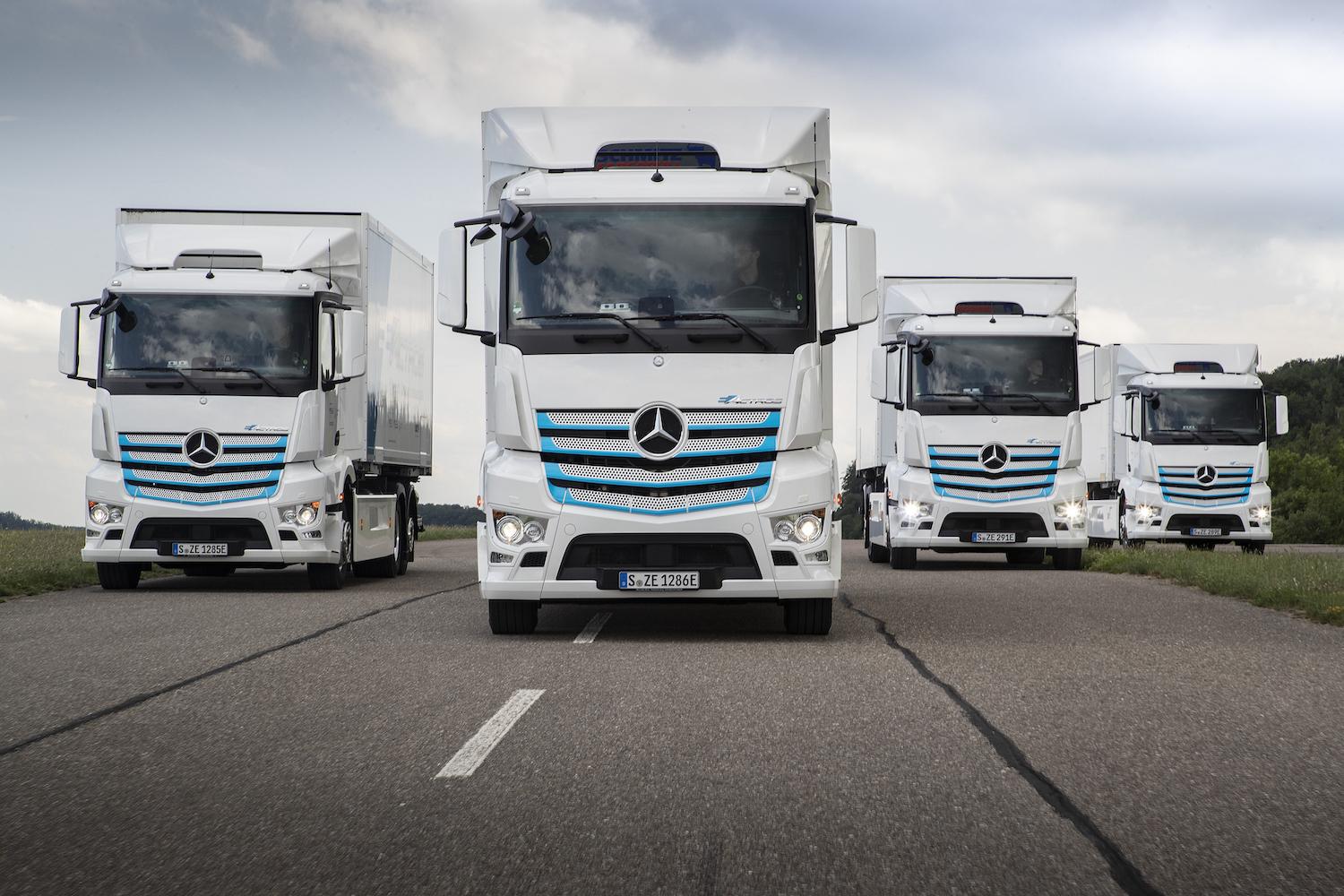
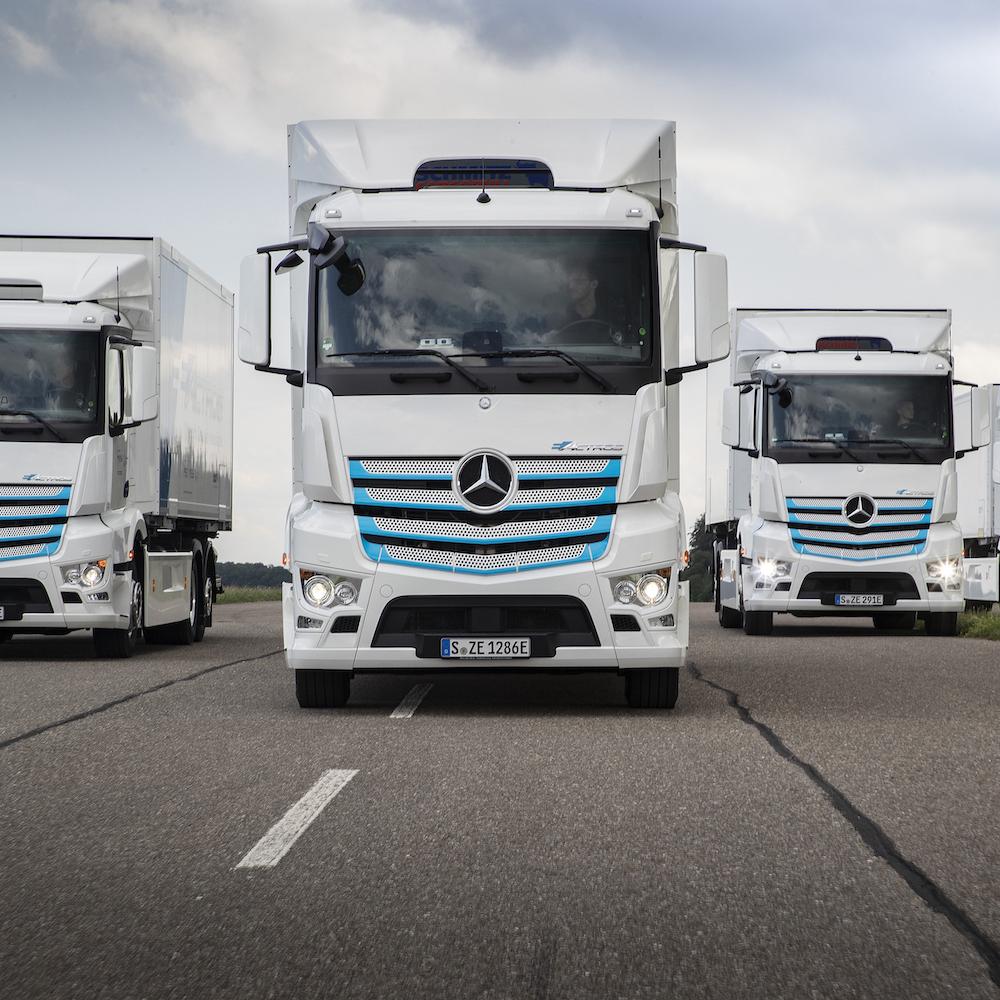
The heavy, battery-electric eActros from Daimler brand Mercedes-Benz went through three years of intensive customer testing before hitting the market in June 2021 for use in urban areas.
The transportation sector is the single largest contributor to greenhouse gas (GHG) emissions in the United States, according to the EPA, having dislodged electricity generation from the top spot in 2017. It will likely remain the chief emissions offender too, because while GHGs from electricity generation have fallen compared with 1990 levels, emissions from transportation activity are still edging upward.
As this trend continues, sharper focus will fall on the need for emissions reductions from the transportation sector. Though total transportation emissions also include those from planes, trains and ships, over half of the sector’s emissions come from road vehicles alone.
Of that portion, medium- to heavy-duty trucks have the most impact, contributing a full 20 percent of road transportation emissions while representing just 5 percent of all registered vehicles. Decarbonize these, and substantial GHG reductions can be realized.
Happily, momentum is building to make this happen, spurred on by various cities, states, the U.S. federal government and the business community.
Decarbonizing corporate fleets is a key tool to reduce global emissions
Black & Veatch, a leader in clean energy, engineering and transportation infrastructure, surveyed executives at 420 Fortune 1,000 companies, and 89 percent of them said reducing GHG emissions is an organizational goal. Over half (53 percent) also indicated that electrifying their vehicle fleets is a primary strategy to cut emissions.
Augmenting that effort is pressure from state governments that are making zero emissions vehicles (ZEV) mandatory at some point on the horizon. But while the signposting toward cleaner transportation seems clear, fleet decarbonization will not happen overnight.
“To convert a fleet to zero emissions by 2030 or 2040 would be considered an aggressive goal,” said Maryline Daviaud Lewett, director of business development for transformative technologies at Black & Veatch. “It takes five to 10 years to convert a medium to large size fleet, so to reach a 2030 goal, you need to start now.”
Even starting today, fleet managers have much to consider, not least of which is figuring out which zero-emission technology will best fit their operation.
Unlike the passenger vehicle market, where electric vehicles (EVs) have been on sale for around a decade with choices growing robustly each year, zero-emission fleet transportation vehicles are really just beginning to emerge. As the technology in this space evolves, hydrogen fuel cell electric vehicles (FCEVs) will come into their own alongside battery EVs, because for some classes of vehicle, fuel cells will be more suitable.
EVs or hydrogen fuel cells? What works best and where
In general, EV power trains work best in predictable environments where temperate climates prevail, as those systems excel over shorter range hauls with flatter terrain. They’re also better suited for lighter weight vehicles, up to Class 6 — which, for context, includes single-axle trucks and school buses.
Conversely, FCEVs are advantageous for longer range cycles, performing better in colder climates and in circumstances where repeatedly negotiating steep grades with heavy payloads is expected. Class 8 trucks — think: large semi-trailer trucks — would be ideally suited to FCEV power trains.
There are further considerations fleet managers must consider, though, even once they figure out which zero-emission vehicle platform will likely work best. As things stand today, they face a zero-emission fleet market still in its infancy, with commensurate limitations.
Scaling zero-emission fleets in an emerging market
For the moment, EV technology is further along. There is a higher degree of standardization in charging infrastructure, for example, along with increasing vehicle choice either available now or in the near-term pipeline.
There’s a lot of business interest in EVs, too. For example, Amazon has invested in the EV company Rivian and committed to purchase 100,000 electric delivery trucks from the startup. In addition, the major international logistics companies, Fed-Ex, UPS, DHL and even the U.S. Postal Service, have all made commitments to introduce electric trucks for their “last-mile” deliveries.
Even Class 8 vehicles can be fully electric on predictable short-range routes. Via a public-private partnership, the Joint Electric Truck Scaling Initiative announced in August will deploy 100 fully-electric Class 8 trucks made by Daimler and Volvo. These will serve the ports of Long Beach and Los Angeles in California, connecting them with nearby distribution centers. The project is slated to displace 690,000 gallons of diesel fuel a year, while reducing pollution in the disadvantaged communities those routes traverse.
But while EVs forge ahead, “hydrogen is a bit behind regarding the technology adoption rate in the US,” Daviaud Lewett told TriplePundit. “Things are not standardized, and the infrastructure is expensive.” Progress is nonetheless being made in the FCEV space.
Black & Veatch has built 18 hydrogen stations in California, where the nation’s hydrogen filling stations tend to be concentrated. Yet for FCEVs to gain traction and become an important part of the zero-emission fleet, the U.S. needs more fueling stations as well as reliable hydrogen supplies in distributed locations, ideally green hydrogen.
The road forward for hydrogen fuel cells
Sourcing hydrogen itself is a tough nut to crack, with a carbon footprint of its own to consider. Most hydrogen produced today is derived from natural gas, with production centralized in just three key U.S. states. Additionally, since natural gas is mostly methane, which is itself a greenhouse gas, only if it involves carbon-capture can it be seen as a suitable bridge fuel known as “blue hydrogen.” The most promising source, however, is green hydrogen.
Green hydrogen is derived from the electrolysis of water: the process of splitting off hydrogen atoms from H20 in an electrolyzer. Though energy intensive, if done with 100-percent renewables, the process would result in zero-carbon emissions. Ultimately, site level electrolyzers are foreseeable, reducing the current reliance on centralized sources.
There are several pilot programs running for renewable hydrogen around the world, but as a reference, even conventionally sourced hydrogen cuts emissions in half compared with the diesel and gasoline it replaces in FCEVs, according to the U.S. Department of Energy.
Beyond solving for hydrogen sources, FCEVs face another fundamental challenge: There are no large truck fleets currently on the market. FCEV buses are just now coming into the mix, which will help with moving people, and Daviaud Lewett predicts truck fleets could follow in about three to four years’ time.
The bottom line: Decarbonizing fleets is challenging, but it’s more than doable
In short, there are a lot of moving pieces involved in decarbonizing fleet vehicles in a young and still evolving market. Fleet operators who want to make the switch have to plan carefully to select the right technology and the right vehicles while considering infrastructure needs, especially if they want to bring EV charging or hydrogen filling stations on site. For fleet EV charging, it can take up to 18 to 24 months to build out the onsite charging infrastructure, including getting the requisite power supply from local utilities. But it will likely be increasingly advantageous to make the effort.
The bottom line, Daviaud Lewett told us, is “the total cost of ownership of a zero-emission fleet is already competitive with conventional fleets.” But since there are greater upfront costs, government investment can spur things along. “Where there are subsidies and grants available, things are moving fast,” she said.
It’s also encouraging to note also that major oil and international energy companies are getting involved in the zero-emission fleet vehicle space, which brings a final thought: If incumbent energy companies are prepared to invest in technology that allows for the decarbonization of fleets, there is promise in the possibility that the world can transition from the legacy technology of the internal combustion engine to a zero-emission fleet future.
This article series is sponsored by Black & Veatch and produced by the TriplePundit editorial team.
Image credit: Daimler (press use only)
Faster EV Charging: Yet Another Reason to Convert Your Fleet to Electric Vehicles
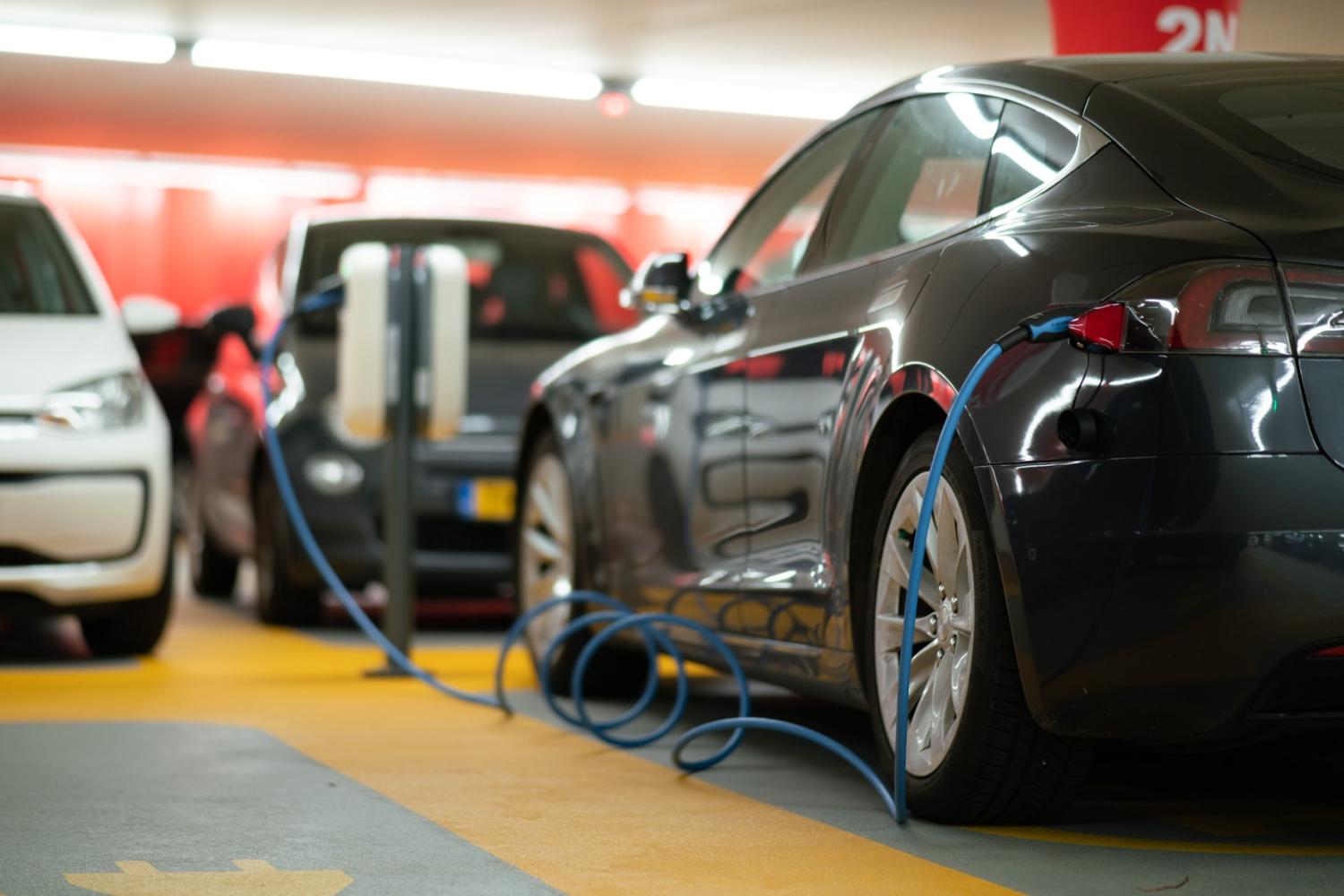
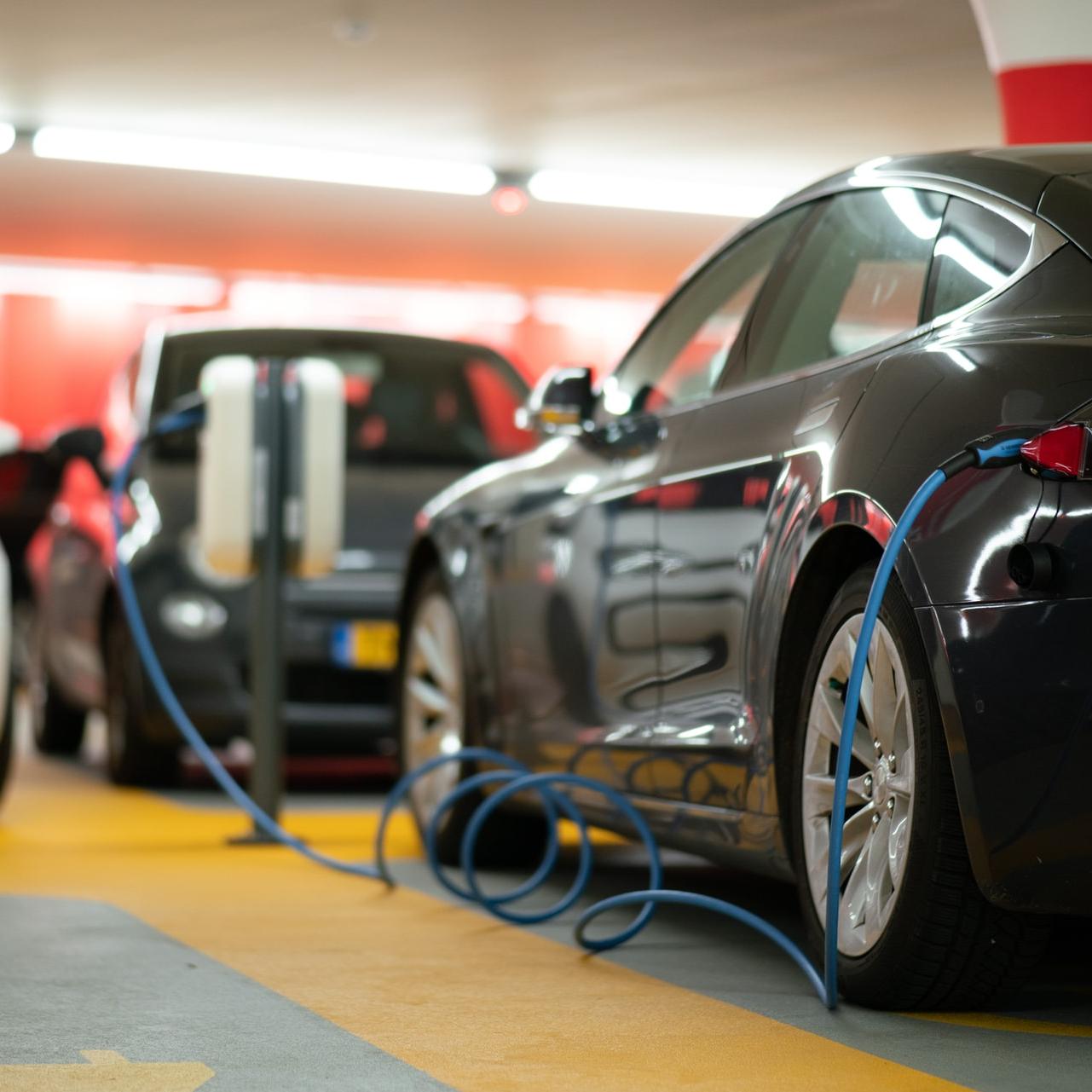
One obstacle standing between electric vehicles (EVs) and the commercial market is the length of time it takes to recharge the battery. However, EV charging times have been steadily shrinking as the technology improves, and a new chip from the firm Navitas Semiconductor could kick the fast-charging trend into high gear.
EV charging and the disappearing gas station
Charging time is not an issue for fleets that can park when not in use at privately-owned garages, lots and depots. The time issue mainly applies to fleets that need to rely on public charging stations. A long EV charging time can easily add an unwelcome layer of complexity onto scheduling and route planning.
Fortunately, concern over access to public charging station is beginning to fade. Improvements in battery range enable new EVs to stay on the road longer without recharging, and today’s electric vehicles can charge faster. A sharp, ongoing increase in the number of public charging stations also makes it easier for fleet vehicles to recharge on-the-go.
In fact, public EV charging stations are rapidly becoming more available than gas stations. That is especially evident in urban areas, where “gas deserts” are occurring as real estate trends push local pumping stations out of city centers.
Analysts at The Rocky Mountain Institute argue that the gasoline gap can be can be filled by EV charging stations. They suggest that automakers, ride-hailing companies and other electric vehicle stakeholders work to ensure that charging stations are built in urban low-income communities.
Consolidation in the gas stations sector has also had an impact on gas availability outside of cities, forcing drivers to travel farther in search of fuel. As the 20th century drew to a close there were about 200,000 gas stations in the U.S. Now there are only 150,000, many of which are co-located with convenience stores.
The co-location strategy has been a lifeline for the remaining gas stations, but it requires more land, limiting site selection for new locations.
In addition, the convenience factor is not exclusive to gas stations. EV charging creates many more opportunities for adding convenience to daily routines. For example, Ikea was an early adopter of EV charging for shoppers, and the U.S. Department of Energy has been working with numerous corporations to add workplace charging stations. Drivers with home charging stations can also enjoy the convenience, comfort and safety of refueling at home, rather than detouring to a gas station.
The rise of EV fast-charging
Corporations seeking to burnish their sustainability credentials are especially interested in growing the nationwide EV charging network. From a logistics and operational point of view, the only remaining obstacle is charging time. Despite recent improvements in fast-charging technology, there is still a wide gap between the time it takes to recharge EV batteries when compared to filling up a gas tank.
That is about to change with a new generation of technology improvements. One example is Navitas Semiconductor. The company recently introduced a new iteration of its power-integrated circuit used in mobile charging, from hand-held devices to electric vehicles.
Navitas is marketing the award-winning chip under the name GaNFast. Instead of the conventional silicon-based formula, GaNFast is based on gallium nitride, a crystalline material known for superior switching speed and conductivity performance.
“GaNFast integrated power ICs use next-generation GaN to replace legacy silicon chips and enable up to 3x faster charging and 3x more power in half the size and weight for mobile fast chargers, consumer electronics, solar inverters, data centers and electric vehicles,” Navitas states.
A companion technology, GaNSense, is designed to build even more efficiency into the fast-charging system.
From smart phones to electric vehicles
Though the impact on charging times for electric vehicles has yet to be demonstrated, Navitas has documented the performance of the GaN platform on small handheld devices. The company claims that its “ultrafast” charger using GaNSense can take a smartphone with a powerful 4,500 mAhr battery from zero to 100 percent charged in just 17 minutes.
Meanwhile, it looks like fleet managers will soon be able to trim their calculations for charging times at public EV charging stations.
Tesla has been grabbing media attention with its “Supercharger” network of fast-charging stations, but activity has also been bubbling up outside of the spotlight.
In one especially interesting development that has an impact on EV charging times, the Department of Energy notes that the level of power available at DC fast-charging ports has increased dramatically. Earlier DC (direct current) ports were capped at 50 kilowatts. Now they routinely exceed that mark, which some reaching as high as 350 kilowatts in the U.S.
Legacy engineering firms are also contributing to the trend. The global company ABB, for example, is behind the increase in 350-kilowatt charging stations in the U.S., and it recently launched its “Terra 360” charging station with 360 kilowatts of power.
ABB introduced the new EV charging station in Europe and reportedly plans on bringing it to the U.S., so the Department of Energy may have to revise its DC charging port figures again.
According to ABB, the new charging station can provide up to four electric vehicles with a full charge in less than 15 minutes.
For those topping off a battery, the charging time is even more attractive. ABB claims that the new station will add 100 kilometers of travel (about 62 miles) in less than three minutes of charging.
The new station is designed for commercial fleets as well as workplace or customer charging.
As gas stations continue to disappear, fleet managers have all the more incentive to begin planning their operations around electric vehicles and charging stations.
Image credit: Michael Fousert via Unsplash
Three Pillars of an Effective Employee Engagement Program
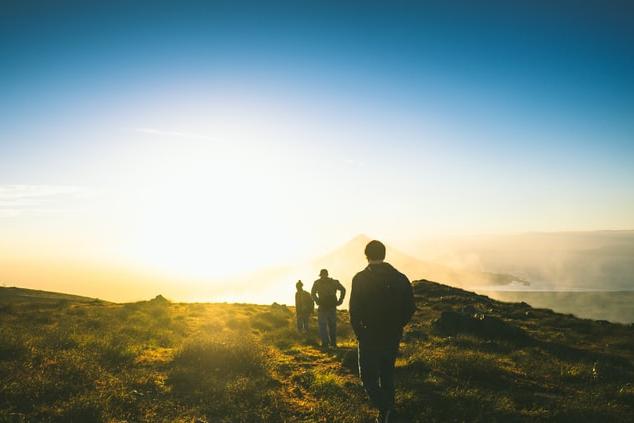

The UN climate summit in Glasgow may be over, but the debate over next steps has only just begun. As world leaders consider where to go from here, it’s important to remember that action, not commitments, will ultimately determine the success or failure of our global climate strategy — a strategy that requires the engagement of not only national governments, but companies and individuals as well.
The private sector has shown it can be a powerful engine for change but it’s the passion and ingenuity of the corporate workforce that keeps that engine humming. And therein lies the rub, for many companies have struggled to keep employees engaged — a task now further complicated by the pandemic. More than a year of isolation has left people feeling more disconnected from their employers and their sustainability work. And Zoom happy hours, while quite nice, aren’t going to bridge the gap.
Employee engagement is not a novel concept. For decades, companies have seen it as a valuable tool for securing and retaining talent, increasing productivity and improving their bottom line. Now, amid the public’s rising concerns about climate change and other environmental issues, employee engagement has also become an essential tool for implementing corporate sustainability strategies.
The good news is people want to be part of the solution. A 2019 survey of the Fortune 1000 found that half of employees wanted to see environmental protection and other worthy causes somehow reflected in their job responsibilities. And yet, the same survey also found that only a quarter of employees actually felt that their company’s stated commitments were connected in any way with their day-to-day work.
Employees are rightfully demanding more transparency and accountability from their employers, and when they don’t feel they’re getting it, they’re increasingly embracing activist tactics. In recent years we’ve seen several high-profile examples of employee activism in the technology, apparel and consulting sectors — cautionary tales for any company that wishes to avoid similar conflicts.
The pressure for companies to step up their game is unlikely to abate any time soon. Today, Generation Y makes up the largest portion of the U.S. labor force, and 70 percent of them expect their employers to take an active role in addressing issues like climate change and social justice. Moreover, Generation Z, which is just now entering the job market, is more racially diverse and better educated than previous generations, and shares many of Generation Y’s positions on environmental and social issues.
Young Americans want their employer to be an agent of change, not a barrier to it. But business leaders need to offer more than lip service to prove their bona fides, they need to foster a culture of environmental stewardship — at every level of their institution.
At World Wildlife Fund (WWF) we identified three pillars upon which companies can build an effective employee engagement program. First, equip employees with the information they need to understand sustainability issues — how they impact their business as well as their daily lives. Second, provide meaningful ways employees can put this information into action — at work and at home. And third, incorporate philanthropy — both employee giving and corporate funding — to maximize the employees’ impact and incentivize participation through creative match and grant programs.
It’s not just about dollars. Employees can give, volunteer or lend their voices to the growing chorus of people calling for change. The important thing is they feel connected to the work and empowered to be a part of the solution.
Deloitte is one corporate partner laying the path for this employee journey. As part of its strategy to reach net-zero by 2030, Deloitte has set out to drive responsible climate choices within its organization and beyond. WWF worked with Deloitte to develop a climate impact assessment to help people learn more about the impact of the food they consume, the products they purchase, and the way they travel. Employees can determine their climate impact and, more importantly, unlock positive climate actions they can take today to live more sustainably.
When employees are given the big picture and are able to see their company’s role in it, they then become empowered to carve out a meaningful role for themselves. And by bringing employees into the fold and acknowledging them as key stakeholders in corporate sustainability efforts, companies can spur exactly the kind of productivity and innovation needed to drive large-scale, transformational change.
So, there you have it. Even in these uncertain times, millions of employees across America are eager to roll up their sleeves and get to work. They have the will. Who will show them the way?
Image credit: Tim Foster via Unsplash
CEO Advises EV Makers to Bet on Hydrogen Fuel Cells, Too


Daimler Truck's FUSO eCanter, which the company says provides a 62-mile (100-kilometer) range with a single charge. The company's CEO also insists hydrogen fuel cell-powered trucks need to be an important part of the global trucking sector.
The discourse over electric vehicles (EVs) has been heating up, thanks partly to a field of high-profile startups headed by Tesla. However, much of the attention has tilted towards electric vehicle batteries. Hydrogen fuel cells also provide for zero-emission mobility, and Daimler Truck CEO Martin Daum is among those who advocate for including both fuel cells and batteries in the mix.
The case for batteries and hydrogen fuel cells, too
In the context of technology available today, the case for including both batteries and hydrogen in the global electrification strategy is a simple one.
During an interview with CNBC earlier this month, Daum explained that Daimler Truck is committed to both as it is a diversified company that makes trucks for a variety of uses.
Shorter distances are appropriate for batteries, especially where there are opportunities for overnight charging. For longer trips and quicker refueling, fuel cells fill the bill.
“In general, you can say: If you go to city delivery where you need lower amounts of energy in there, you can charge overnight in a depot, then it’s certainly battery electric,” Daum explained. “But the moment you’re on the road, the moment you go from Stockholm to Barcelona … in my opinion, you need something which you can transport better and where you can refuel better and that is ultimately H2.”
Daimler Truck and electrification diversity
Daimler Truck is a recent spin-off from Daimler AG. Its focus is on buses and heavy-duty trucks, while the latter will concentrate on passenger cars and vans under the Mercedes brand.
That arrangement sheds additional light on Daum’s embrace of both fuel cells and batteries. He affirmed the diversified approach last month, when the Daimler Truck spinoff was announced.
“As a technologically leading manufacturer of trucks and buses, we will do everything we can around the world to offer our customers the best products, our shareholders an attractive return on their investment, and our employees sustainable jobs,” Daum said. “That’s why we are accelerating the development of battery and fuel-cell vehicles in all segments along the way to emission-free transport.”
Fuel cell passenger cars are facing hurdles in the competition for market space against an ever-improving scenario for battery-electric cars. In contrast, the playing field is leveling in the area of heavy-duty mobility including construction equipment as well as trucks and buses.
Cleaning up the zero-emission act
Batteries and hydrogen fuel cells provide for zero emission mobility at the tailpipe, but Daimler Truck and other automakers still have to address sustainability challenges in both fields.
Battery electric vehicles currently rely on lithium-ion technology. Until other formulas are developed, the auto industry will need to address environmental and human rights issues in the global lithium supply chain. The worldwide lithium-ion battery recycling industry also needs to be ramped up.
Fuel cell technology also faces supply chain and environmental issues related to mining. Fuel cells generate electricity by combining hydrogen with oxygen in the presence of a catalyst, typically based on platinum. Until alternatives are developed, fuel cell car manufacturers will need to address the impacts of platinum mining.
The green hydrogen piece of the puzzle
Hydrogen fuel cells have garnered an eco-friendly image because they generate electricity without producing airborne pollutants. Water is the only byproduct. However, the zero-emission picture is clouded by natural gas, which is currently the primary source of the global hydrogen supply.
Fortunately, alternative sources have already begun to emerge. Much of the investment activity is currently focusing on green hydrogen, in which renewable energy provides electricity to run electrolysis systems, which can push hydrogen gas out of water.
The renewable energy angle could help accelerate the growth of the global green hydrogen supply by attracting the same deep-pocketed oil and gas stakeholders that have been pursuing wind and solar energy opportunities.
That is apparently under way. Last spring, for example, Shell signed an agreement with Daimler Truck AG to develop fuel cell hubs and fueling stations in the European Union that feature green hydrogen. Shell also played a key role in the launch of the EU’s new Refhyne green hydrogen project last summer, and earlier this month the company announced a new green hydrogen partnership with the firm Norsk Hydro.
BP provides another example. Last week, Sally Prickett, the company’s vice president for hydrogen market development, told attendees at the recent S&P Global Platts hydrogen markets conference that “we see hydrogen as a really important vector in decarbonizing some of the particularly difficult-to-decarbonize areas of industry and transport.”
According to Prickett, BP is providing room for gas-sourced hydrogen in its 10-year plan, but electrolysis systems for green hydrogen are also included.
Daimler Truck and other diversified automakers that are committed to incorporating fuel cells into their decarbonization plans should begin pressing BP and other energy stakeholders to make more green hydrogen available as quickly as possible. Otherwise, their new fuel cell vehicles will be dragging a long tail of fossil energy behind them for years to come.
Image credit via Daimler Truck
With Employees Anxious About Returning to the Office, New Tool Can Help Boost Confidence in Buildings’ Health and Safety
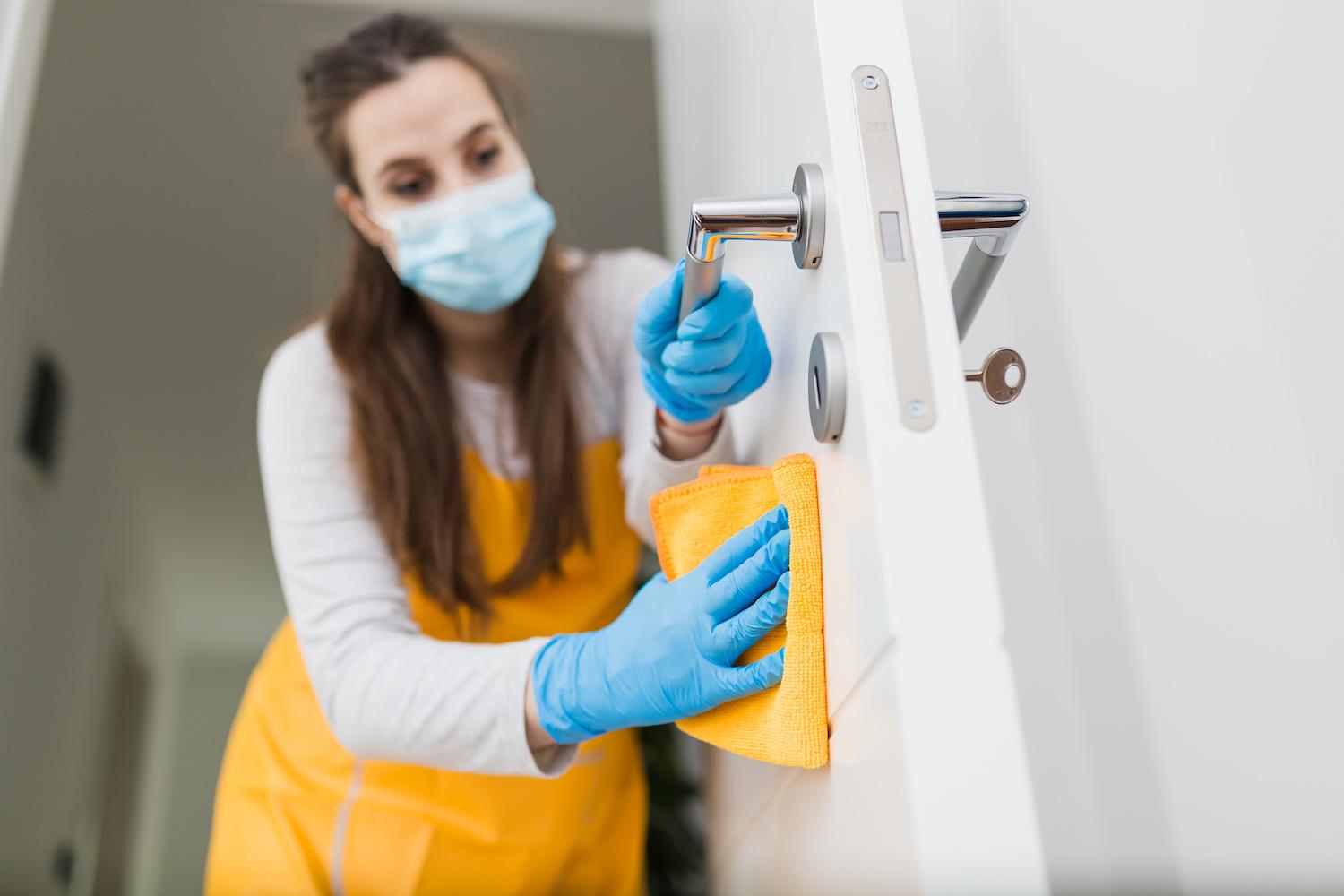

The health and safety of the workplace have always been a priority for employees, but the COVID-19 pandemic has put such concerns into sharp relief — and many Americans are still anxious about their return to in-person work.
Companies that have decided to reopen their physical office spaces are putting their buildings’ health under the radar to support safer and healthier workspaces. And for an increasing number of them, the tool they lean on is the WELL Health-Safety Rating for Facility Operations and Management.
Launched by the International WELL Building Institute (IWBI) in July 2020, the rating is designed to help businesses large and small prepare their spaces for re-entry in the wake of COVID-19 and into the future. While it was adapted from the widely used WELL Building Standard (WELL) and informed by the IWBI Task Force on COVID-19, it has broader applicability for supporting the long-term health and safety needs of people in a given space.
“One thing that the pandemic has put into the forefront is the need for healthy and clean buildings that prioritize health,” Rodolfo Perez, senior director of standard development at IWBI, who leads the team’s water and materials concepts, told TriplePundit. “While the practices the rating promotes are not new, they have grown in importance since the pandemic, with interest from businesses growing exponentially.”
Safety, health and well-being are top concerns for building owners
Indeed, in a new survey focused on the facility management industry in the U.S. and Canada, 86 percent of building managers responded that the safety, health and well-being of employees, occupants, and visitors is their leadership's top concern, according to Blue Skyre, a commercial real estate management company which facilitated the survey that was conducted by survey researcher HarrisX.
Perez of IWBI contributed to the cleaning and sanitization procedure requirements that are one of five core areas in the WELL Health-Safety Rating, along with emergency preparedness programs, health service resources, air and water quality management, and stakeholder engagement and communication. There is good reason to focus on cleaning and sanitization, Perez said, as these practices are critical components in the defense against the spread of pathogens.
It’s no wonder, then, that some 94 percent of building managers have reported that their buildings installed or plan to install improved HVAC air filtration systems and adopt advanced wellness programs, according to the Blue Skyre survey, while hand sanitizing stations, temperature checks and frequent cleaning of high-touch areas are now common.
From handwashing to reduced surface contact, simple procedures work
These are among the practices suggested in the WELL Health-Safety Rating: handwashing, reduced surface contact, better cleaning practices, the selection of preferred cleaning products and reduced respiratory particle exposure. Handwashing may seem like an obvious and long-recommended procedure for a hygienic workplace, but today the simple act of handwashing has gained enormous attention as an effective way to reduce the spread of infectious disease — and studies show people often still need a reminder.
Reducing surface contact is another key tactic. While the main way people become infected with COVID-19 is through exposure to respiratory droplets carrying infectious virus, contact with contaminated surfaces or objects (fomites) are a known source of spread for viral diseases, according to the U.S. Centers for Disease Control and Prevention (CDC), although the risk is generally considered to be low.
Reducing the instances where people touch surfaces can help to minimize one of the vectors of disease transmission. The first step is to assess all of the high-touch surfaces throughout a building and consider temporary or permanent strategies to reduce the frequency of touching those surfaces, or even the need for hand touch, Perez told us. For example, an automated soap dispenser that operates by sensor rather than touch, or a water fountain activated by a foot pump, would cut down the number of high-touch surfaces. Employers can also consider ways to avoid people touching door knobs, elevator buttons, faucet handles and security equipment, Perez suggested.
For a sensible cleaning protocol, the key is not to overdo it
A key part of the arsenal to improve cleaning practices is a cleaning and disinfection plan that includes instructions, training and record-keeping, Perez told us. “You need to have a cleaning objective, establish a plan that will meet those requirements, and follow that plan,” he said. “The key is to do it right, but not overdo it.”
One aspect of cleaning and sanitization that shouldn’t be overlooked is the type of cleaning products used and to avoid any hazardous or harmful ingredients in those products. Commercial cleaning products may contain ingredients that degrade indoor air quality and are suspected to be hazardous to human health. “It’s also a question of equity,” Perez explained, “for instance, we should work to protect the health of janitorial staff with significant exposure to cleaning products.”
The final component of the rating’s cleaning and sanitization procedures is minimizing people’s contact with contaminated respiratory particles. Here is where the now-familiar step of establishing physical distance between people in the office, or even building physical barriers to prevent respiratory particles, may slow the spread of pathogens.
While the approach will vary, every building owner or employer is seeking to create a level of comfort — physical and psychological — for those who decide to return to the workplace.
“Let’s not forget that we need to feel safe in the places where we work. If someone feels their personal safety is threatened in a specific setting, they are less likely to be comfortable there,” Perez said. “So in addition to the protection it brings against the spread of pathogens, cleaning and sanitization may play a very important role in making people feel welcome in a space.”
Streamlined accreditations to spur uptake of best cleaning practices
With cleaning and sanitization as a critical line of defense, IWBI has joined forces with the Global Biorisk Advisory Council (GBAC), a division of the worldwide cleaning industry association International Sanitary Supply Association (ISSA), in a joint initiative to accelerate the uptake of best practices that strengthen the role of buildings in the fight against COVID-19 and other infections.
Specifically, the GBAC Star Facility Accreditation Program is become a recognized path of partial compliance for cleaning and sanitization criteria within IWBI’s WELL Health-Safety Rating. A GBAC Star accreditation can count toward five of the 15 points necessary to achieve the WELL Health-Safety Rating overall.
Proper cleaning protocols, disinfection techniques when necessary and infection prevention practices are all important components in the age of COVID-19 and beyond, Perez said — and it can’t be a “one-and-done” type of approach.
“Cleaning plans are living documents, not paperwork that only collects dust,” he told us. “The WELL Health-Safety Rating is meant to be operational. Building owners and employers need to continually assess their needs and adjust and update their cleaning and sanitization plans. More than ever, we need to take the precautionary approach, so that our buildings are equipped to meet the challenges of this changing work environment.”
This article series is sponsored by the International WELL Building Institute (IWBI) and produced by the TriplePundit editorial team.
Image credit: zphoto83/Adobe Stock
Is Action for the Greater Good Losing Steam? Our Data Says It Is, and Giving Tuesday Is Our Collective Opportunity


There’s a big mural on an apartment building near my home that says, “We’re in this together.” In spring of 2020, seeing that sign made me feel hopeful. Now when I see the fading words, I cynically ask myself if that’s really true anymore. Maybe that’s an indicator of my own mental health, but with Giving Tuesday coming up tomorrow, November 30, I have started to imagine what it would feel like to be “in it together again.”
If you haven’t heard of Giving Tuesday, you’re not alone — only 37 percent of adults have, according to the latest data available. In its 10th year, Giving Tuesday is an annual day dedicated to giving back and doing good that comes the day after Cyber Monday as a counterbalance to the consumerism of that day and Black Friday. For context, last year we spent $34.4 billion online during Cyber Week, the 5-day period between Thanksgiving and Cyber Monday, according to Adobe, whereas only $2.5 billion was donated on Giving Tuesday in the U.S.
Giving Tuesday: the least recognized day of action
The gap in awareness could be because Giving Tuesday receives only 2.25 percent of all major media conversation in the holiday cycle, according to a recent analysis our team performed using Signal AI, and is the least talked about day compared to other recognized national days that highlight critical societal issues, such as Black History Month, Martin Luther King Jr. Day, Pride Month, Indigenous Peoples Day, International Women’s Day and Earth Day. Maybe it’s time to give Giving Tuesday a bit more of our attention, too.
In 2020, a new level of commitment to social issues was spurred, and we saw the power of collective action. Whether you were sewing masks, marching in protests or amplifying Black voices, donating funds or goods, or volunteering your time to communities hit hard by the pandemic or social justice causes, there were a lot of small actions that added up to big impact.
Yet, a year and a half later, we’re living in a much more polarized — and inequitable — world. And we seem to have lost steam. The truth is that we are giving less. So far, data from Benevity shows that individuals gave 19 percent less from April to October 2021 than they did during the same period in 2020. Arguably the need is just as great now as it was when we were in crisis. And if we are to prevent further crises, injustice, inequity, we need to act now, not when crisis hits.
Can Giving Tuesday reinvigorate our collective drive to come together as a global community and take action on the issues affecting our world? Even if just for one day?
Signs of hope
A lot has changed about the way we give that gives me hope. In the four years prior to the pandemic, social-and political-related causes made up only 10 percent of donation-based action. When our world was turned upside down in 2020, we saw a huge shift toward corporations and their employees, customers and communities taking action beyond their personally favored causes to create more impact around issues that matter for the good of the global collective.
Corporations stepped up by providing matching campaigns, large grants and customer donation incentives that made a difference in how much people got involved. And we expect to see more of that as companies put their weight behind Giving Tuesday.
In recent months, Benevity data has revealed a sharp uptick in donations related to such critical issues as mental health, refugee relief and vaccine equity. Afghanistan refugee relief-related donations have surged 142 percent in the last month, compared to the first seven months of 2021. Mental health-related causes saw a 73 percent year-over-year increase in donations in October alone. And causes dedicated to vaccine equity saw donations spike 10x earlier this year and have experienced sustained support over the past five months for big, global initiatives such as Go Give One.
This shows that these pressing social issues are still on our collective minds. Tomorrow, join us in doing just one good thing for the world and making Giving Tuesday a strong day of action.
Image credit: Tyler Logalo via Unsplash
Guest articles reflect the opinions of the bylined authors and not necessarily those of TriplePundit’s editors and writers.
Next Stop for the Tire Industry: The Circular Economy


Tires may not be the first commodity that comes to mind when imagining a circular economy. Their numbers are hidden in plain sight. Globally, approximately 1 billion tires reach the end of their lives each year, and the potential consequences of discarding, stockpiling and dumping tires can include catching fire and breeding mosquitoes.
The good news is that end-of-life tires, or ELT, are a valuable resource for the circular economy. Natural rubber, of course, is a significant component, but it only constitutes about a fifth of a passenger vehicle’s tire. Elements like synthetic polymers, steel and textiles also play a part. Each has a unique purpose for tire performance, and each remains valuable, even at end of life. Ensuring that these components get to an appropriate end use, however, takes deliberate research, planning and management.
Most end-of-life tires are already recovered. Circularity is the next step.
The bulk of ELT are already recovered, according to the 2019 Global ELT Management report from the Tire Industry Project (TIP), a CEO-led sustainability forum for the tire industry that sits under the umbrella of the World Business Council for Sustainable Development (WBCSD). Within the 45 countries considered, accounting for over 80 percent of the world’s vehicles in use, 86 percent of ELT were recovered. These findings represent a significant improvement over the last few decades. Only 30 years ago, the United States was recovering 17 percent of its ELT, compared to 75 percent in 2019.
The tire industry continues to roll along, and its next destination is circularity. Members of TIP, leaders in the tire industry, provide useful indications of where the industry is growing. Some companies have been reworking the resources they use in their tires. Goodyear, for example, has replaced petroleum-based components with soybean oil in some tread compounds. Pirelli aims to use at least 40 percent renewable materials in select consumer tires by 2025.
Toward more sustainable natural rubber, and to lessen reliance on Hevea brasiliensis — the trees which provide the world’s supply of natural rubber — Bridgestone has invested in the development of an alternative source, guayule, a rubber-producing plant indigenous to the hot and dry environments of the southwestern United States and north-central Mexico. And the Michelin Group’s 2050 target — to source all of its materials from recycled or renewable sources — will do its part to move the industry’s needle toward circularity. The group is also engaged in recycling end-of-life tires.
Understanding the importance of research for continued progress, as a whole, TIP members focus on advancing global knowledge about ELT management (through initiatives like its state of knowledge reports). Tire manufacturers, recyclers and regulators are all calling for more research and innovation in support of the sustainable management of ELT. Last year, the U.S. Tire Manufacturers Association (USTMA) reported a 20 percent decrease in tire recycling nationwide since 2013, noting the importance of market development.
“Three decades after we successfully eliminated 94 percent of the over 1 billion scrap tires stockpiled around the country, this report reveals that efforts to find and develop new uses for scrap tires have stalled,” Anne Forristall Luke, president and CEO of USTMA, said in a statement. “We must take immediate steps to grow new and existing markets to recycle 100 percent of scrap tires. This not only protects our health and the environment — it drives innovation and jobs.”
Rubber modified asphalt a promising ELT innovation
Organizations like The Ray — a nonprofit pursuing net-zero roadway solutions on an 18-mile stretch of interstate highway in Georgia — are forging the way to a circular economy for tires through research, experimentation and advocacy. This year, The Ray worked with USTMA to examine the environmental impacts and benefits of one destination for end-of-life tires: rubber modified asphalt, an innovative paving material made from asphalt cement and ground ELT that carries a significantly lower carbon footprint compared to traditional asphalt pavement.
The Ray has already installed rubber modified asphalt on one mile of the interstate’s four lanes, upcycling over 40,000 pounds of rubber from ELT in the process. While testing the pavement, the organization is looking to investigate previous research, Allie Kelly, executive director of The Ray, says — pursuing questions such as: Does rubber modified asphalt really make quieter and longer-lasting roads that resist cracking, as researchers hope? Do these roads manage stormwater more effectively? Can adding rubber reduce tire wear?
"When you understand the knowns, you also understand the gaps, and then you can more strategically find any follow-up studies or follow-up research,” Kelly says. Results were published last summer with an immediate call for more research. In reviewing more than 300 scholarly sources and surveying 26 state highway agencies, the study found that rubber modified asphalt is a promising circular solution that reduces costs over the life of the asphalt, extends pavement life and reduces roadway noise, among other verified benefits.
Valuing ELT, innovating toward a circular economy
Kelly emphasizes that a key to successfully giving tires a “second life and beyond” is changing how we view ELT. “The problem is that when the tire gets to the end of its life on a vehicle, we don't regard it as a commodity. We regard it as scrap,” she says. “And we don't really invest in scrap.”
There has been great innovation in manufacturing tires, Kelly notes — from airless tires to sensor additions to 3D printable tires. The Ray, recognizing the value in ELT, is advocating for innovation throughout the tire lifecycle, she says.
The shift from standard ELT recycling practices has only just begun. While rubber modified asphalt has great potential as a destination for ELT, Kelly recognizes a broader purpose for organizations like hers in the growth of this corner of the circular economy: “I think what our role is at The Ray, with partners like USTMA, is to make sure that we're taking full advantage of end-of-life opportunities for scrap tires,” she says.
Driving progress, together
As The Ray pursued its study on rubber modified asphalt, TIP was rolling out a series of value-chain workshops for sustainable ELT management that aimed to improve the exchange of knowledge and good practices between stakeholders. The fruits of these efforts included the recently published ELT Toolkit for Improved ELT Management Systems. The toolkit is directed toward markets that have the potential to recover more ELT; TIP also plans to establish a digital platform to facilitate knowledge-sharing among stakeholders.
Citing how little of the world has achieved circularity, the World Economic Forum claims that a circular economy “requires unprecedented collaboration.” The ten member companies of TIP certainly can’t transform the global management of ELT on their own. That’s the beauty of TIP’s knowledge-sharing approach — good practices and approaches that work should be shared so they can reach the stakeholders and regions where they are most needed. Toward a circular economy for tires, knowledge sharing and stakeholder cooperation will be the key drivers of progress.
This article series is sponsored by the Tire Industry Project and produced by the TriplePundit editorial team. Members of the Tire Industry Project (in alphabetical order) are Bridgestone, Continental, Goodyear, Hankook, Kumho Tire, Michelin, Pirelli, Sumitomo Rubber, Toyo Tires, and Yokohama Rubber.
Image credit: Imthaz Ahamed/Unsplash
Happy Thanksgiving! We’re Absolutely Thankful for Our Readers


Like most of you on the day before Thanksgiving, we’re a bit distracted. We’re focused on one thing though: Our gratitude to our readers. We appreciate the fact you keep coming back.
While we’re on the topic of distractions, we’ll be closing up shop for the long weekend and returning on Monday, November 29. In the meantime, if you’re fearful that your upcoming holiday gathering is akin to SNL’s recent spoof of a Target Thanksgiving ad, then consider this executive editor’s timeless pumpkin chocolate chip cookies: They are a definite crowd please and can satisfy almost everyone’s dietary (and political) needs.
In the meantime, we wish you a Happy Thanksgiving to you and your loved ones.
Leon Kaye’s Addictive Thanksgiving Pumpkin Chocolate Chip Cookies
1/2 cup Miyoko’s Vegan butter or other “healthy” margarine
1 cup organic brown sugar
1/2 cup organic granulated sugar
1 humanely sourced (cage free, organic, etc.) egg (You can try using ¼ cup of applesauce or another alternative if you wish for these to be vegan)
1 cup organic canned pumpkin
1 teaspoon fair trade vanilla extract
2 1/2 cups organic all-purpose flour
1 teaspoon baking powder
1 teaspoon baking soda
1 teaspoon sea salt
2 1/4 tsp pumpkin pie spice (or a mix of cinnamon, nutmeg, allspice, ginger and cloves)
1/2 cup chopped walnuts (optional – or any nuts for that matter)
1 cup or a 12 oz bag of fair trade-certified semisweet chocolate chips (or dark chocolate chips or chunks)
The steps to making these addictive cookies:
- Preheat the oven to 350F degrees.
- Grease cookie sheets, or use parchment paper or a silicone baking sheet.
- In a large bowl, cream together the margarine and both sugars until light and fluffy. Beat in the egg, then fold in the pumpkin and vanilla. Combine the flour, baking powder, baking soda, salt, and spices; gradually mix into the creamed mixture. Stir in the walnuts and chocolate chips. Drop dough by rounded teaspoonfuls onto the prepared cookie sheets.
- Bake for 15 minutes in the preheated oven, or until light brown. Cool on wire racks.
- Try to eat only one. It so won’t happen.
You can use butter, but using Miyoko’s vegan alternative (which I prefer as it has no palm oil) or a similar product gives the cookies a nice texture, similar to a cake. If you don’t have pumpkin pie spice, a mixture of cinnamon, nutmeg and allspice should do the trick. And don’t forget the salt–it brings out the flavor of the chocolate.

The results should look almost the above photo, courtesy Keith McDuffee via Wiki Commons. (The author’s photos never happen as platters of these cookies disappear before he thinks of snapping a pic.).
Lead image credit: Joseph Gonzales via Unsplash
ViacomCBS Is Prioritizing Mental Health


As featured in the ViacomCBS Social Impact Review
In the U.S., suicide rates are the highest they’ve been since World War II, yet mental health is still often misunderstood and stigmatized. Events in 2020 brought this concern to the forefront for our viewers.
ViacomCBS has a commitment to mental health stretching back a decade and a half. Building on our long legacy, MTV Entertainment Group has recently launched Mental Health is Health, an initiative seeking to harness the power of storytelling to destigmatize mental health and drive behavioral and cultural change that normalizes mental health conversations and inspires action.
In 2020, ViacomCBS and the Well Being Trust conducted a survey of Americans to better understand the attitudes of mental health care. We found that:
- COVID-19 and social injustice have only exacerbated mental health challenges, with more than half of respondents reporting that difficult feelings have been getting in the way of their daily activities and relationships during the pandemic.
- 78 percent of Americans believe that their mental health is an important priority.
Collaborating To Create a First-of-Its-Kind Mental Health Media Guide
In recognition of the pivotal role storytelling can play in addressing the growing mental health crisis, MTV Entertainment Group led the development of the first-ever Mental Health Media Guide, a groundbreaking, comprehensive resource for content creators designed to help expand positive mental health portrayals. The Media Guide was developed by a coalition of media and entertainment companies and mental health experts and organizations. We will use it to inform our own storytelling and programming across our channels.
Our Brands’ Commitment To Being A Part of the Solution
Our brands have championed a constructive conversation around mental health for many years. When the SHOWTIME show Homeland first aired in 2011, the main character, Carrie Mathison, was one of the only protagonists on television struggling with bipolar disorder.
In 2020, we participated in the mental health and wellbeing conversation in a number of ways:
- The Daily Show with Trevor Noah raised over $40,000 during Mental Health Awareness Month and highlighted programs to help address the unique emotional challenges of the pandemic. The recipients of the donation, Vibrant’s Disaster Distress Helpline and NYC Well, provide life-saving crisis support to anyone in distress.
- Lady Gaga’s mother, Cynthia Germanotta, joined the CBS This Morning special Stop the Stigma broadcast to talk about the impact of mental illness on her family and friends.
Sparking Important Conversations
In 2020, we announced that we will expand mental health resources, including our Employee Assistance Program, to all production teams and talent to ensure that every single person on a ViacomCBS production has access to free, professional counseling.
ViacomCBS Veterans Network is partnering with our content producers to talk about mental health and suicide proactively and responsibly. For example, SEAL Team is a drama that follows an elite unit of Navy SEALs as they train, plan and execute the most dangerous, high-stakes missions our country can ask of them. We introduced David Boreanaz, a leading actor on the show, to a couple who lost their son in combat in order to give Boreanaz perspective on what his role means to military families.
For shows that contain triggering content like Blue Bloods, a CBS drama about a multi-generational family of veterans and cops dedicated to New York City law enforcement, the ViacomCBS Veterans Network reviewed scripts to ensure appropriate warnings were included.
On the international side, we supported the UK’s Film + TV Charity in the launch of its Whole Picture Programme, which is designed to improve mental health for employees behind the scenes in UK film and TV. We will continue to work with the charity’s taskforce and mental health experts to help those working in our industry feel supported and valued.
In Africa, MTV Generation Change’s Need to Know in Isolation series passed the mic to Nigerian mental health activist Hauwa Ojeifo, who discussed the importance of selfcare, explained how access to services like medication and therapy is vital for vulnerable populations and encouraged audiences to amplify the call for mental health awareness during the global pandemic.
Read the 2020 ViacomCBS Social Impact Review here.
Previously published in the 3BL Media newsroom.